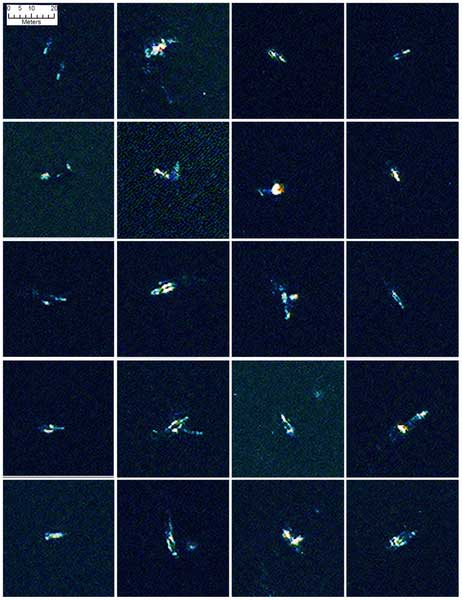What's Happening at Discovery Diving
Get all the latest info from our Instructors and Staff on our SCUBA Classes, Charters, Equipment and Special Events.
Whale Watching from Space
- Font size: Larger Smaller
- Hits: 1156
- 0 Comments
- Subscribe to this entry
- Bookmark
But not by astronauts or space tourists. Scientists from the British Antarctic Survey are using satellite images to detect and count southern right whales (Eubalaena australis).
In recent years there have been over 420 deaths of these whales in their nursery grounds at PenÃnsula Valdés in Argentina. (Out of a population last estimated at 2577 whales.) Most of the dead were calves. This number of deaths suggests that the right whale population, and its ecosystem, may be less healthy and robust than previously thought. The whales at PenÃnsula Valdés comprise the largest single population and the high mortality rate has raised fresh concern for the future of the species.
Traditionally whale population size has been assessed by counting from boats, planes or shore. This is labour-intensive, costly and can be inefficient. Detection probabilities are high for ship surveys, but where surveys are carried out by small airplanes rates can be down to 40%. The researchers have tested a method of identifying whales automatically from high resolutions satellite images. They chose southern right whales to evaluate their method, as, they say “The southern right whale is an ideal subject for this work for many of the same reasons as it was an ideal whale to hunt, specifically its large size and a tendency, in the breeding season, to bask near the surface in large aggregations around sheltered coastal waters.â€
The researchers – Peter T. Fretwell, Iain J. Staniland and Jaume Forcada – analysed the images manually and using image processing software.
 <img src="http://news.scubatravel.co.uk/wp-content/uploads/2014/02/whale-watch.jpg" mce_src="http://news.scubatravel.co.uk/wp-content/uploads/2014/02/whale-watch.jpg" alt="Probable whales found by automated " width="462" height="600" class="size-full wp-image-2093" />
<img src="http://news.scubatravel.co.uk/wp-content/uploads/2014/02/whale-watch.jpg" mce_src="http://news.scubatravel.co.uk/wp-content/uploads/2014/02/whale-watch.jpg" alt="Probable whales found by automated " width="462" height="600" class="size-full wp-image-2093" />
Probable whales found by the automated analysis. Several of the images could be interpreted as whale pairs, or as a mother and calf, others may be displaying behaviour such as tail slapping, rolling or blowing. On several images there is a strong return at one end of the feature which is mostly likely the calluses on the whales head. Reprinted under a CC BY license with permission from British Antarctic Survey and DigitalGlobe.
Manually identified whales were put into three classes; shapes that are whale-like and whale-sized are classed as probable whales, other objects are classed as possible whales, but may include bubble slicks and some groups of seabirds. The third class are objects interpreted as sub-surface feature that are potentially whales. Their automated method found 89% of the objects manually classed as probable whales, with 23.7% false positives.
How do they know a whale-like blob is a whale? They used three criteria used to identify any objects in remotely sensed imagery:
- The object is the right size and shape to be a whale
- The object is in a place we would expect to find whales
- There are no (or few) other types of objects that could be misclassified as whales to cause errors of commission.
Overall the researchers were satisfied with their results and suggested that larger surveys over whole calving areas, which could potentially measure thousands of square kilometres, could be automated with a degree of success using their techniques.
Southern right whales were hunted extensively from the 17th through to the 20th century. The pre-whaling population has been estimated at 55,000–70,000 dropping to a low of just 300 animals by the 1920s.

